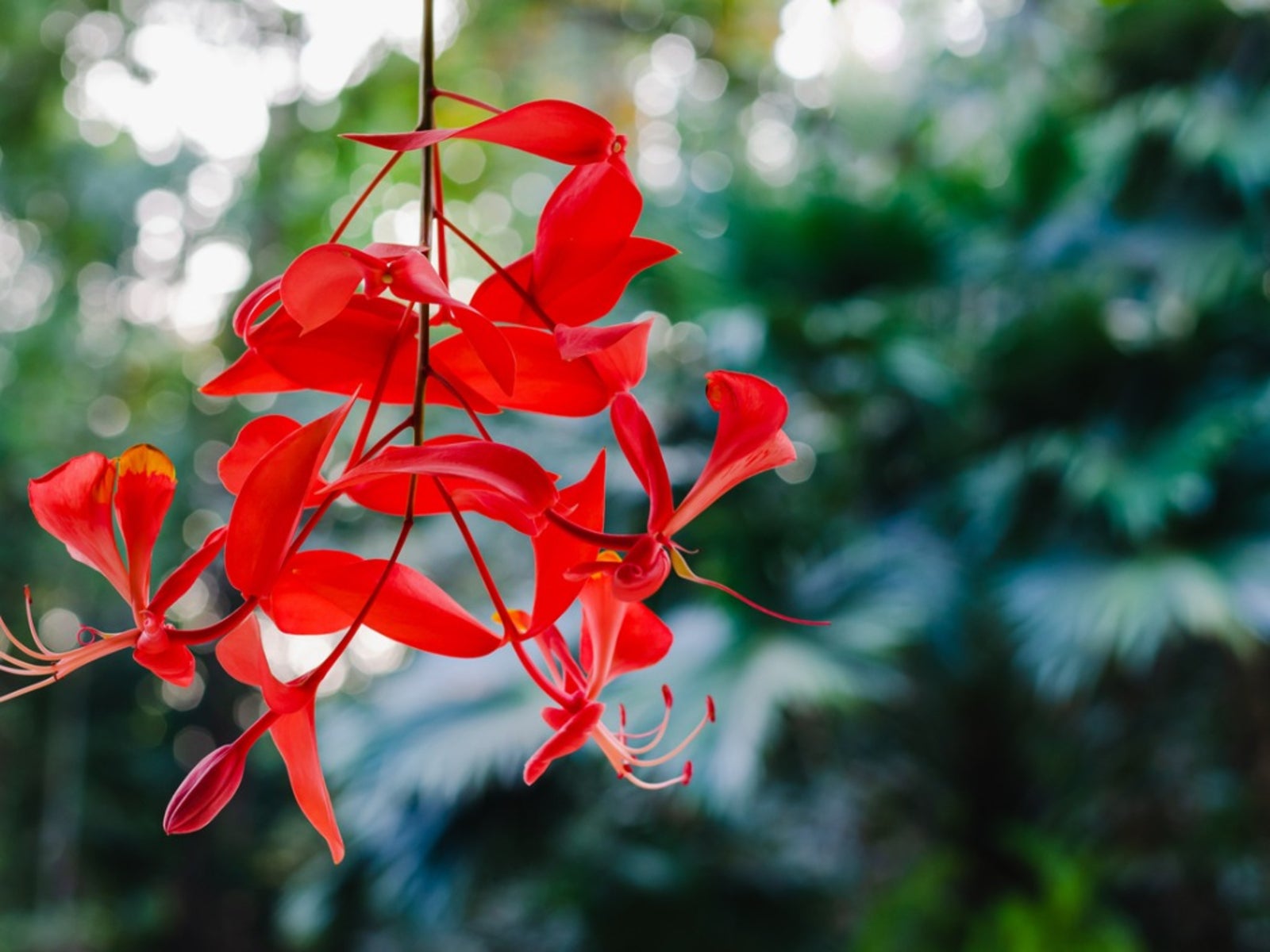Pride Of Burma Information : How To Grow A Pride Of Burma Tree


The Pride of Burma (Amherstia nobilis) is the only member of the genus Amherstia, named after Lady Sarah Amherst. She was an early collector of Asian plants and was honored with the plant's name after her death. This plant is also called the Queen of flowering trees, which references its incredible blooms. Although suitable only for warm regions, this tree would make a magnificent tropical garden specimen. In southern regions, growing Pride of Burma trees as focal points in the garden lends elegance and statuesque color to the landscape. Learn how to grow a Pride of Burma tree and astound your neighbors with a unique plant that has several seasons of appeal.
What is Amherstia?
Amherstia is a tree that appears to have come from India. This solitary family contains just one medium sized tree that produces unimaginable, scarlet flowers dotted with saffron yellow accents. The intense color of the blooms is only overshadowed by the reddish purple new leaves, large mature leaves with white undersides, and 4 to 8 inch (10-20 cm.) long pods. Although named after a prominent collector, Amherstia is more than just a specimen plant. It has a long history of use in Buddhist temples in Sri Lanka and Burma. The plant requires a hot, humid climate for optimum growth. Mature trees may span 30 to 40 feet in height (9-12 m.) and 40 feet in width (12 m.). In its native region the tree is evergreen, producing large spear-shaped leaves in clusters that dangle languidly from their stems. The effect is much like a cluster of colorful red and green handkerchiefs trailing from the plant. Many regions of Florida are successfully growing Pride of Burma trees as ornamental landscape plants.
Pride of Burma Information
Amherstia is a legume. It produces pods, much like bean pods, from its prolific flowers. Pods produce large seeds, which may be planted, but seedlings are not always true to the parent. The better method on how to grow Pride of Burma tree is air layering. This often occurs naturally when a split limb contacts soil and eventually roots. Human intervention can create numerous air layers from the same parent plant, increasing the orchard quickly. The plant flowers between February and May in the U.S., developing crimson blooms flanked by two smaller petals decorated with golden tips. Flowers also have prominent attractive stamen. One of the more impactful pieces of Pride of Burma information is its scarceness. It is considered nearly endangered due to over harvesting and its inability to produce seed that develops into true offspring. Without the efforts of conservationists, this tree would be one of the many plants in our worldwide ecosystem that would have lost its battle with humanity.
Pride of Burma Care
This is a plant that needs well-draining soil and consistent moisture. Pride of Burma must grow in rich, slightly moist soil with an average pH. It cannot be allowed to dry out. Fertilize the tree in early spring, just as leaf buds are swelling. The tree performs best in a partially shaded location but can tolerate full sun. Pruning takes place after bloom and is only required to keep errant stems in check and remove damaged plant material. There are no significant pest or disease issues.
Gardening tips, videos, info and more delivered right to your inbox!
Sign up for the Gardening Know How newsletter today and receive a free copy of our e-book "How to Grow Delicious Tomatoes".

Bonnie Grant is a professional landscaper with a Certification in Urban Gardening. She has been gardening and writing for 15 years. A former professional chef, she has a passion for edible landscaping.
-
 Looking For Plants To Give You The Soft And Fuzzies? Try These 5 Fuzzy Leaf Plant Options
Looking For Plants To Give You The Soft And Fuzzies? Try These 5 Fuzzy Leaf Plant OptionsLovers of texture, drama, silver foliage and tactile plants will adore these special sensory garden additions. These fuzzy leaf plant options will leave you all aglow
By Susan Albert
-
 Get Ready For A Summer Of Hummers! Grow These Full Sun Hummingbird Plants and Flowers
Get Ready For A Summer Of Hummers! Grow These Full Sun Hummingbird Plants and FlowersIf you’re lucky enough to enjoy a sunny backyard, make sure you are maxing out on your pollinator opportunities and grow these full sun hummingbird plants and flowers
By Tonya Barnett